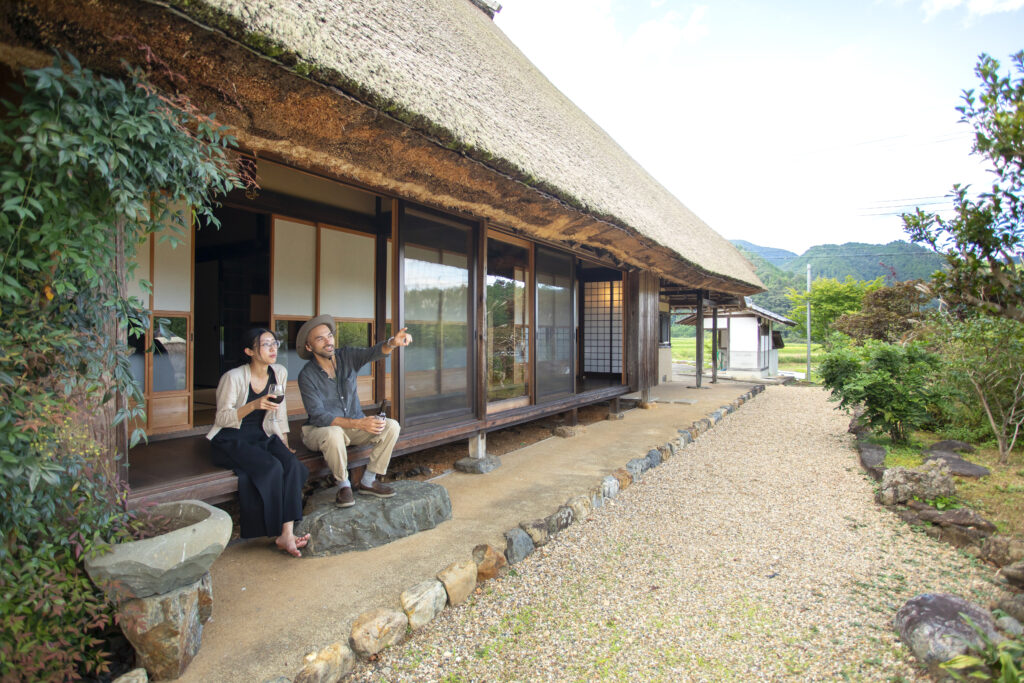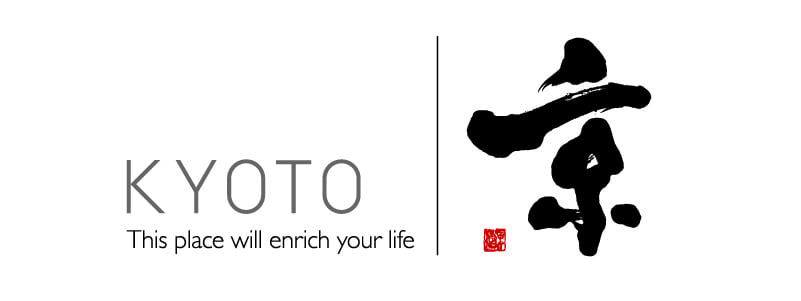A trip to Japan would not be complete without experiencing authentic traditional Japanese lodgings. From a thatched cottage in the mountain retreat of Miyama, to a charming 300-year-old ryokan inn in the coastal city of Miyazu which houses a historic art collection, Kyoto has a range of accommodation options that preserve the unique culture and history of their regional locations.
Inspiration
Rural Escapes: Journeying to Two Traditional Japanese Inns
2022.01.24
Idyllic Scenes of Rural Japan — Miyama Futon & Breakfast (Miyama-cho, Nantan City)
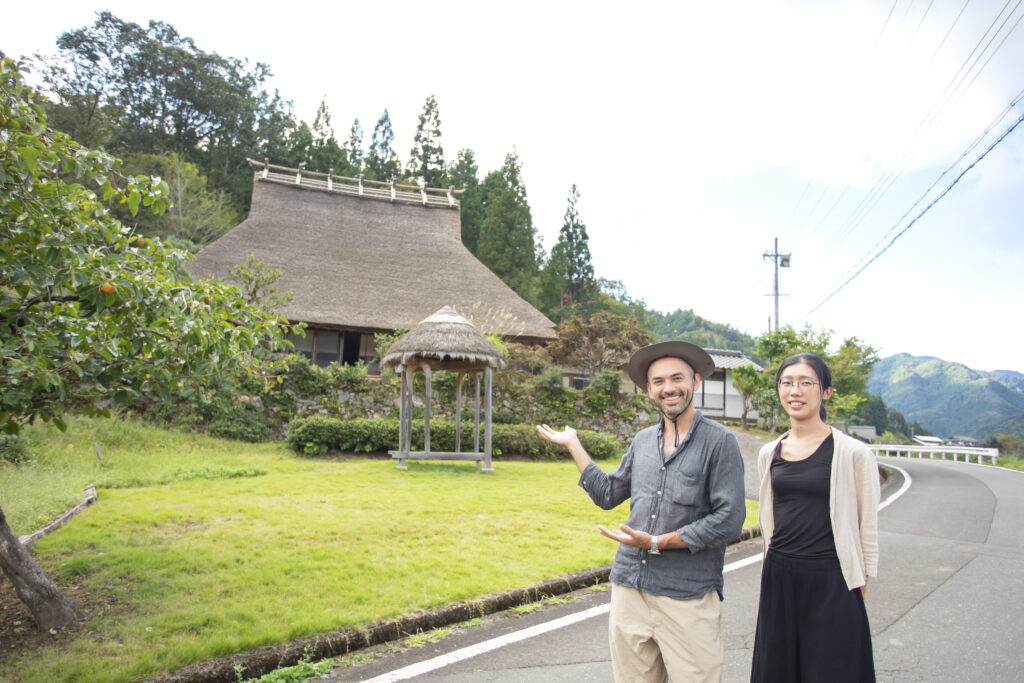
Nestled in the forested mountains of central Kyoto Prefecture, just an hour-and-a-half’s scenic drive from Kyoto City, lies the countryside escape of Miyama. The area boasts unspoiled rural vistas, with the Yura River meandering through the valleys of a landscape dotted with remote hamlets that offer a glimpse into the nostalgic charms of old Japan.
Miyama is known for its thatched roof houses, the greatest concentration of which are in Kayabuki no Sato, a village with 39 beautifully preserved cottages set against a steep mountain backdrop. Known as kayabuki, many of these thatched homes are well over a hundred years old. With so many of these old-style dwellings in one place, it feels as if you’ve taken a step back in time.
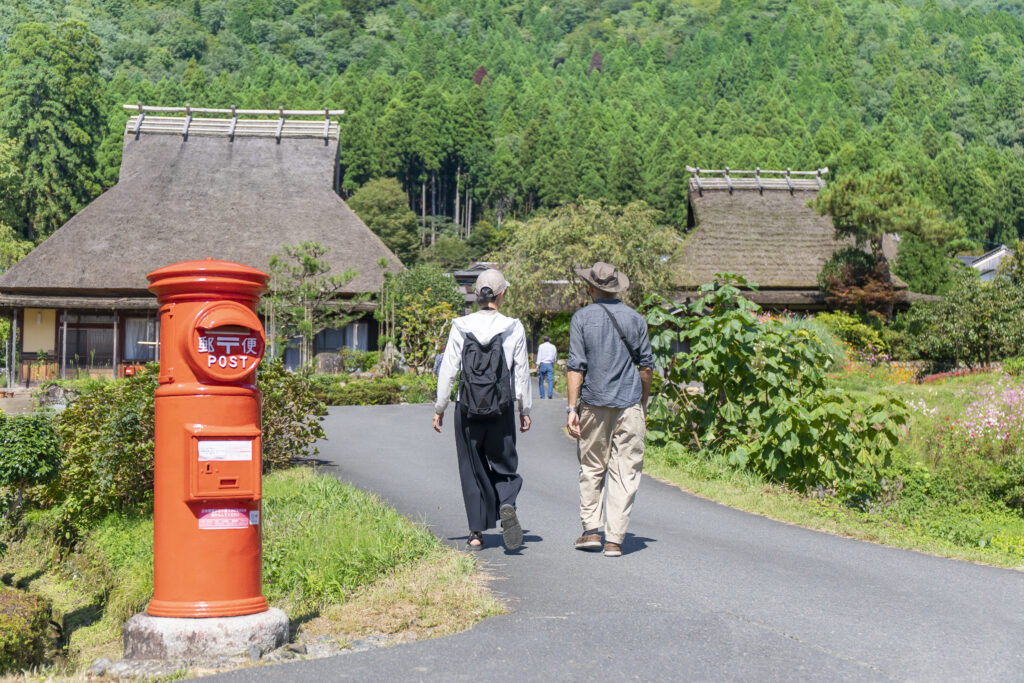
Admiration of these beautiful cottages needn’t only be from afar as a number of lodging options are available for those looking to immerse fully in their rustic charm. Miyama Futon & Breakfast—a hospitality company established by a kayabuki roof thatcher wishing to preserve the culture of thatched homes in Miyama—have renovated a series of cottages for use as holiday rentals. Each property is unique in design and structure. All retain traditional exterior elements and furnishings but with the conveniences of a modern kitchen and bathroom as well as air conditioning to ensure a comfortable stay.
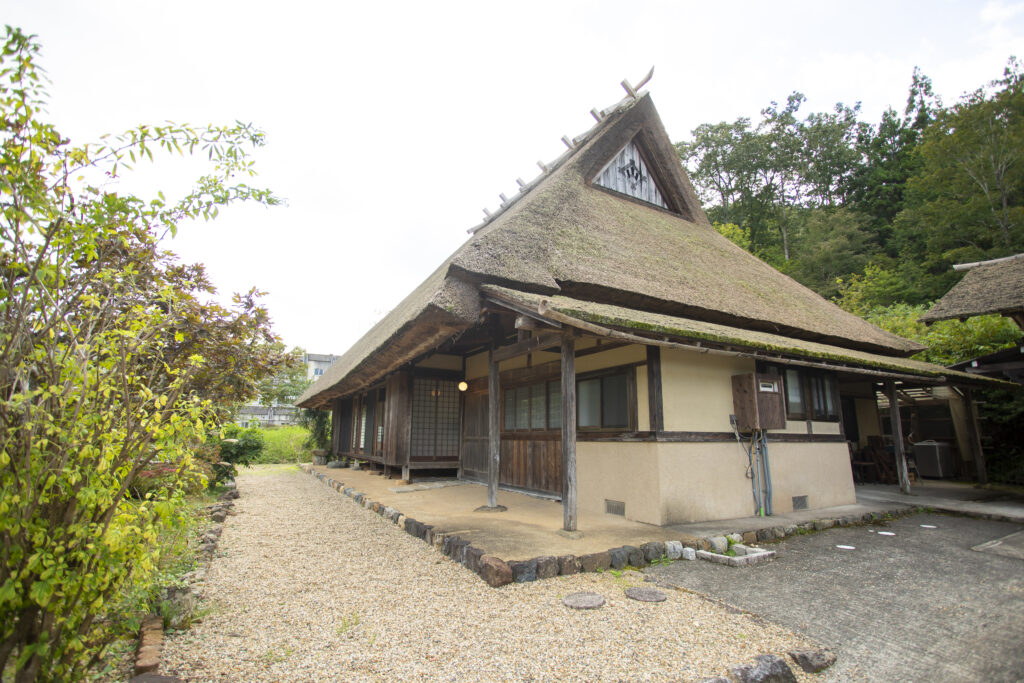
On this occasion we stayed at Mitoya, an elegant 150-year-old cottage perched on a hill above a stone wall and overlooking rice fields, just a 15-minute drive from Kayabuki no Sato. (The operators offer a free shuttle service from JR Sonobe station to their accommodations for guests coming by train.) After checking in at reception, we made the short drive to the property, and were immediately impressed. The earthy tones of its grand thatched roof blended into its surroundings in a way that reminded us of a scene out of an old pastoral painting.

Stepping into the cottage, we were struck by the size of the rooms—this expansive 100-square meter dwelling centers around a spacious living room with several exposed wooden beams running overhead and a large rectangular sunken hearth in the center. From here we could access a bedroom and two large Japanese-style rooms connected directly to a wide veranda that spans most of the northern face of the building.
With the exception of the kitchen, all rooms had tatami flooring, a beautiful contrast with the dark wooden beams of the house structure. While furnishings at Mitoya were largely sparse and utilitarian, this only served to heighten the sense of space.
◆The Freshest Local Seafood
__________
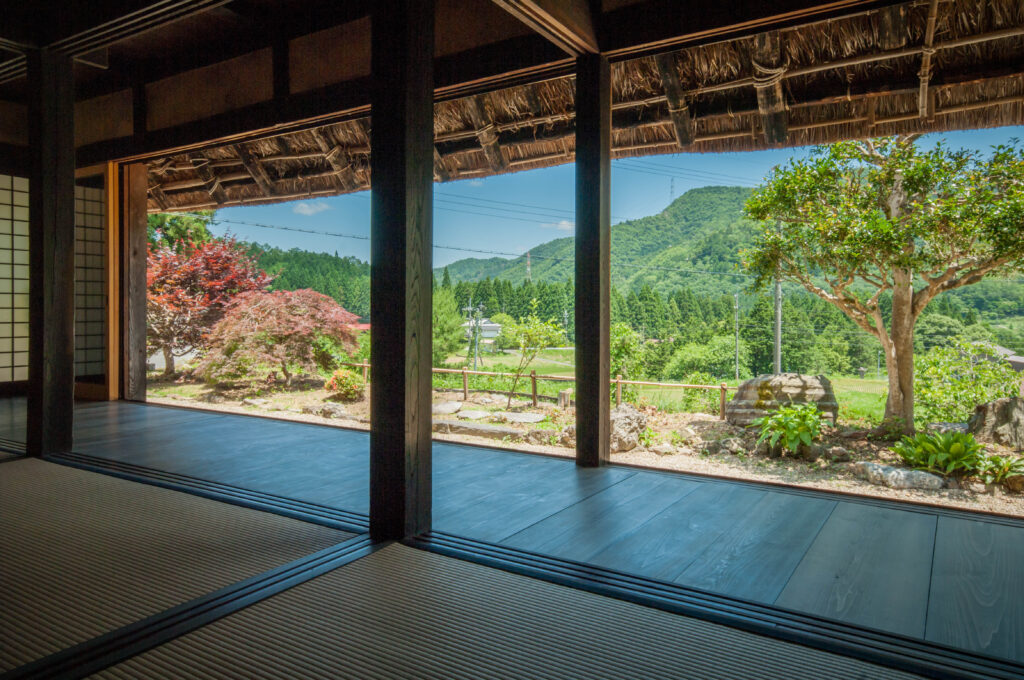
After exploring the interior, we took in the fresh countryside air from the wooden veranda overlooking the property’s charming garden and a tranquil scene of rice fields and mountains in the background. This was a perfect place to relax with a book, meditate or simply enjoy some rural gazing. It also allowed us a closer view of the underside of the thatch roof.
The roof consists of thick overlapping layers of grass bound together and beautifully cut to produce an aesthetically pleasing, even finish. We were told that thatch keeps the interior cool during Japan’s humid summers and also acts as insulation from outside sounds—you won’t be bothered by the noise of even the heaviest of rain!

The shape of the thatch roof and the materials used differ depending on the region and take into account the climate and availability of construction materials. Typical materials include, pampas grass, bundled rice straw and reeds. Miyama’s thatched roofs mainly use pampas grass which usually lasts 20 years before it needs to be replaced. Traditionally, the work of thatching was a group effort by the villagers, and so the process also served to strengthen social bonds within the community.
◆Gather Around the Sunken Hearth
_______________
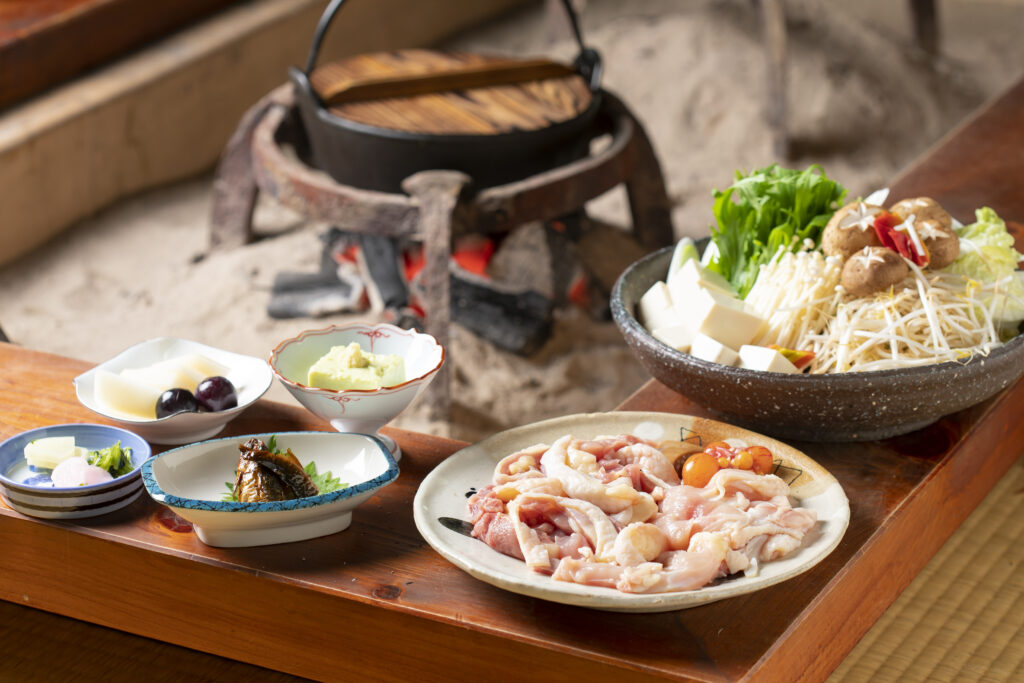
The irori sunken hearth is the symbolic heart of the rural home around which people gather to prepare tea, cook meals, celebrate and keep warm. As well as providing a light source, a low fire would be kept burning at all times as the rising smoke keeps insects out of the thatched roof and helps to preserve the wooden structure of the home.
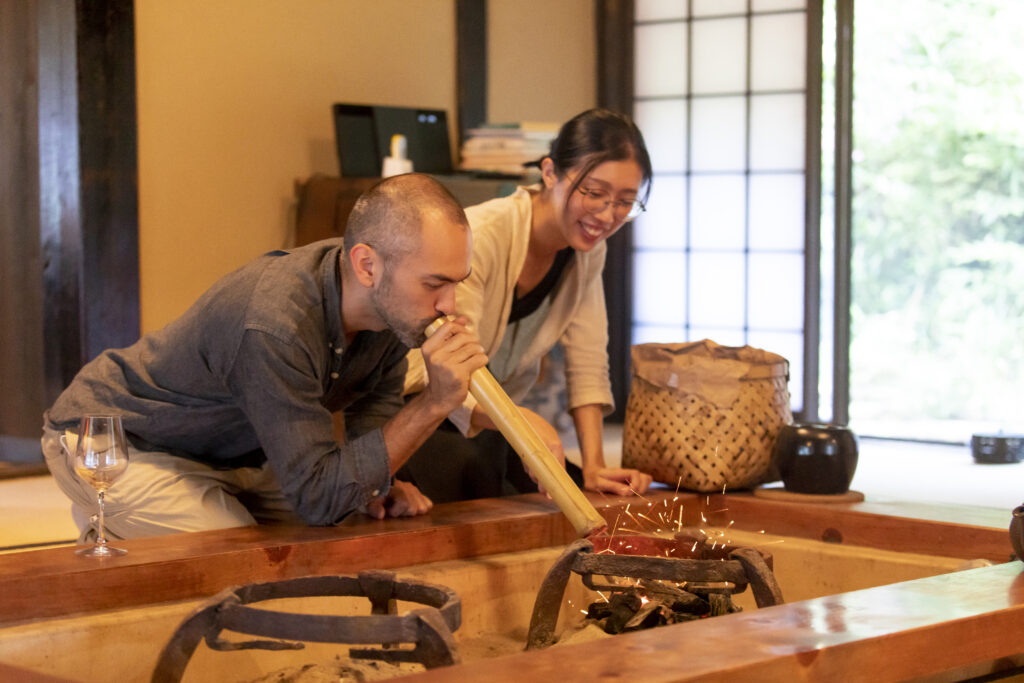
Although the kitchen is fully equipped, cooking over coals in the traditional way in the sunken hearth is the best way to fully embrace the kayabuki experience! We enjoyed a hotpot dinner of free-range chicken and fresh local vegetables along with a number of side dishes provided by the operators of Mitoya. After the delicious meal, we listened to the gentle chirping of insects from outside as the orange embers of the hearth slowly faded and the evening drew to a close.
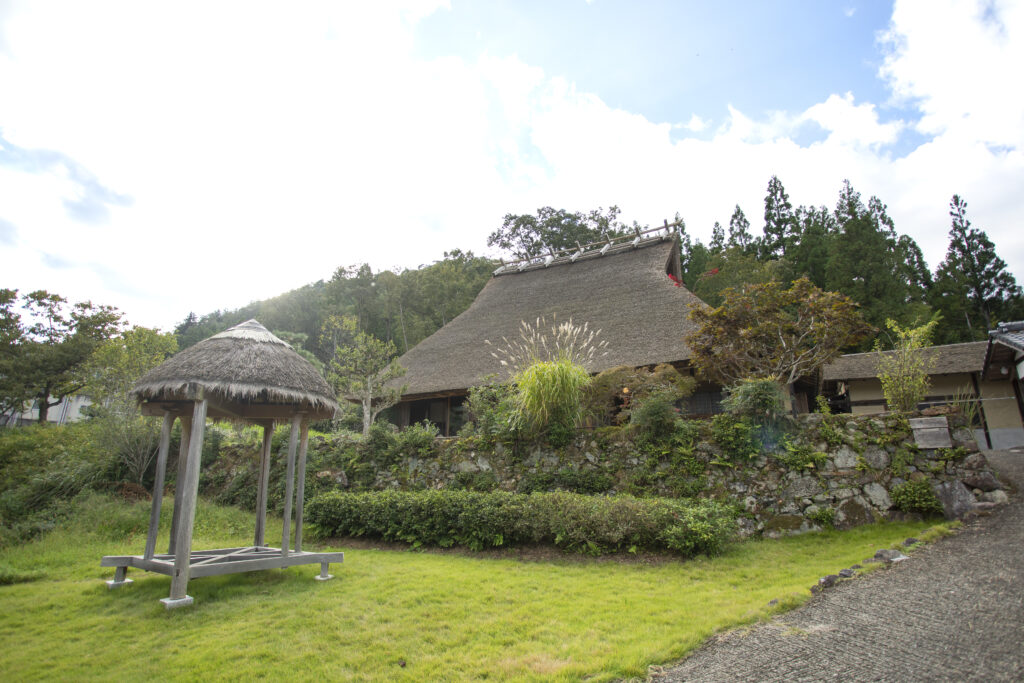
Waking early to breathe the fresh morning air from the veranda, we watched as the mountains and rice fields were bathed in the golden light of a beautiful sunrise. There are also mornings where the surroundings are blanketed in mist and the scene takes on an otherworldly feel. Breakfast was self-serve with local produce including bread and Miyama milk, as well as cereal, coffee and a selection of teas provided in the kitchen.
Staying under the roof of a kayabuki home surrounded by the beauty of Miyama’s countryside revealed a much more tranquil side to Kyoto and provided an insight into the superb architecture only found in the rural parts of the prefecture. We explored the area around Mitoya on foot but another great way to take in the natural surroundings is by renting a bicycle from the operators of the cottage.
If you’d like to further enjoy Kyoto’s countryside, the Miyama area also offers several outdoor activities such as hiking trails, river rafting and fishing.
For Mitoya, prices range from 8,200 yen to 55,900 yen depending on the season and number of guests. Hotpot dinner course is priced at 6,900 yen per person.Shuttle service to and from JR Sonobe station is available.
Address (reception center): 52 Shima-koiwa, Miyama-cho, Nantan City, Kyoto Prefecture
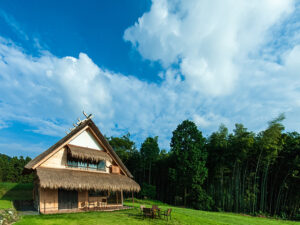
Miyama Futon & Breakfast Thatched Cottages
Miyama Futon& Breakfast is a traditional thatched cottage fully rennovated and complete with all the modern conveniences. The house is 150 years old and registered as a site of cultural heritage. It i …
A Taste of Old-Fashioned Charm: Seikiro Ryokan (Miyazu City)
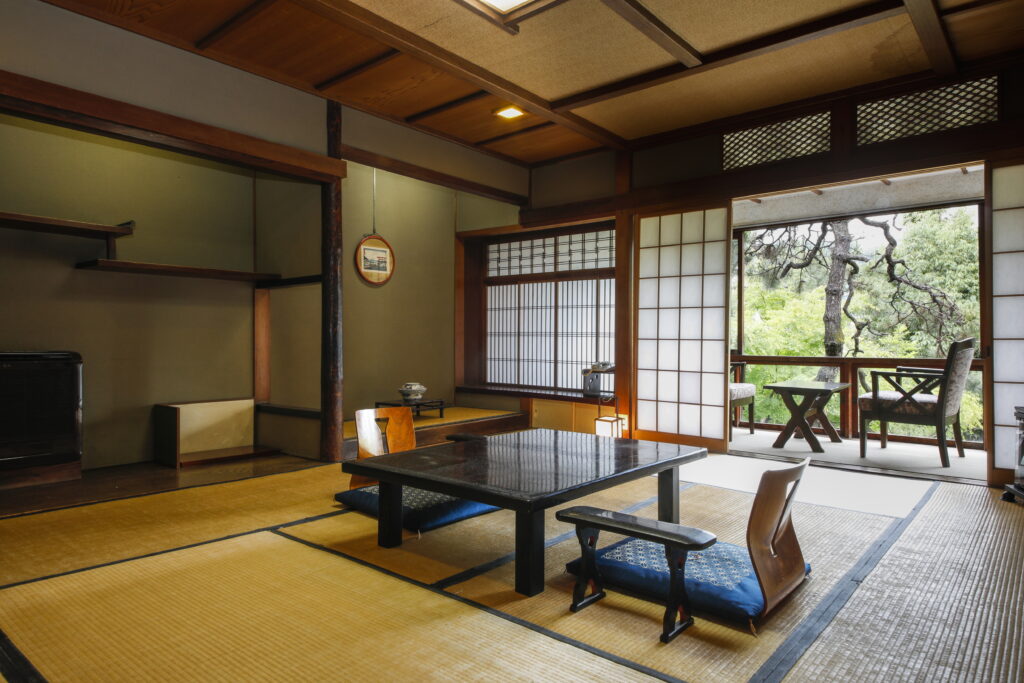
Located by a bay on the Japan Sea one hour and forty minutes north by car from central Kyoto, is the coastal city of Miyazu. A prosperous castle town during the Edo period (1603-1867), the city still retains an ‘old town’ charm thanks to a number of buildings preserved from this era. For hundreds of years this region has also been the center of production and distribution of an important kimono fabric, a silk crepe known as Tango chirimen. However, the biggest draw to the region is undoubtedly Amanohashidate, a picturesque pine tree covered sandbar—generally considered one of the top three most beautiful scenes in Japan—that stretches across Miyazu Bay to the scenic Tango Peninsula beyond.
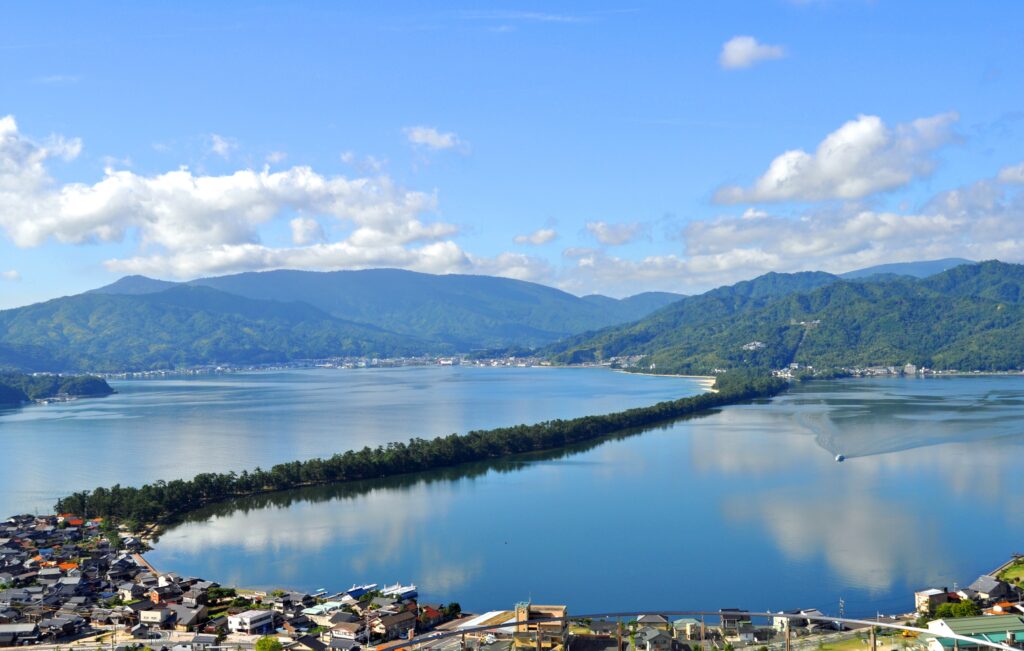
Over the centuries people from far and wide have journeyed to this coastal region to enjoy its culture and natural beauty. A short drive from Amanohashidate is a traditional Japanese inn, Seikiro, which has been providing accommodation for these travelers since it was established by the Tokuda family over 300 years ago. Impressively, the inn has remained in the hands of the same family ever since it opened its doors in 1690—the present manager is the 13th generation of Tokudas to run the establishment.
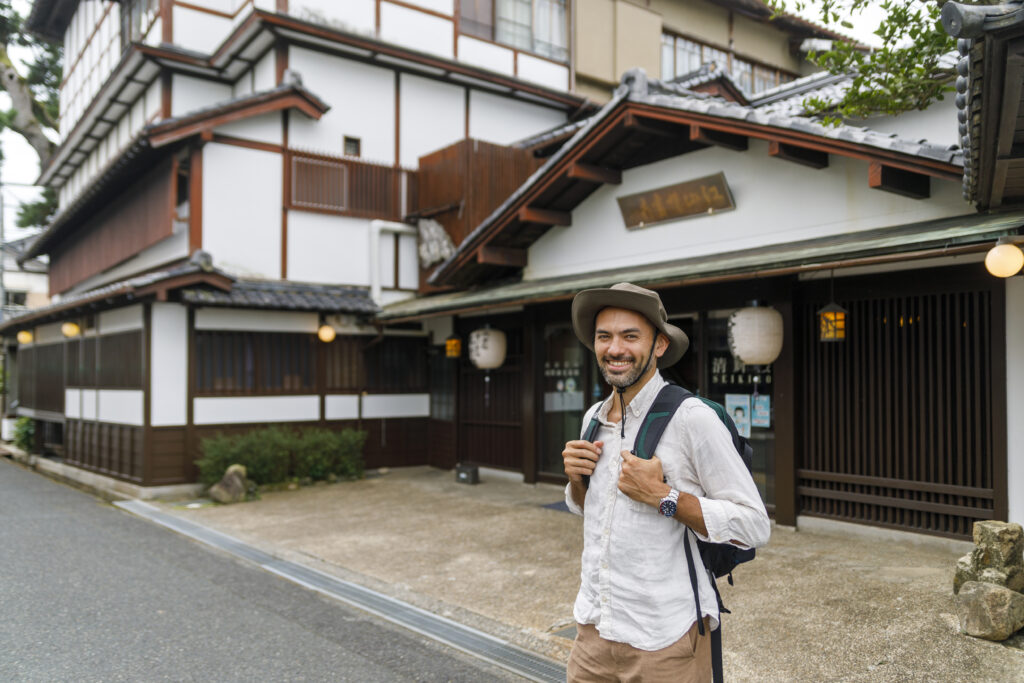
The three-story building is registered as a tangible cultural property, with its main section being constructed 120 years ago. Upon arrival, we were immediately greeted by the smiles of staff—we hear Seikiro is well known for excellence in hospitality—as we began to get our first taste of the charm of the property. Instead of wooden floors, which are more typical of Japanese inns, the corridors and stairs here are lined with cozy tatami mats. The old-fashioned furnishings in the foyer created a nostalgic air, and the welcoming atmosphere made us feel very much at home.
◆An Artist’s Retreat
_______________
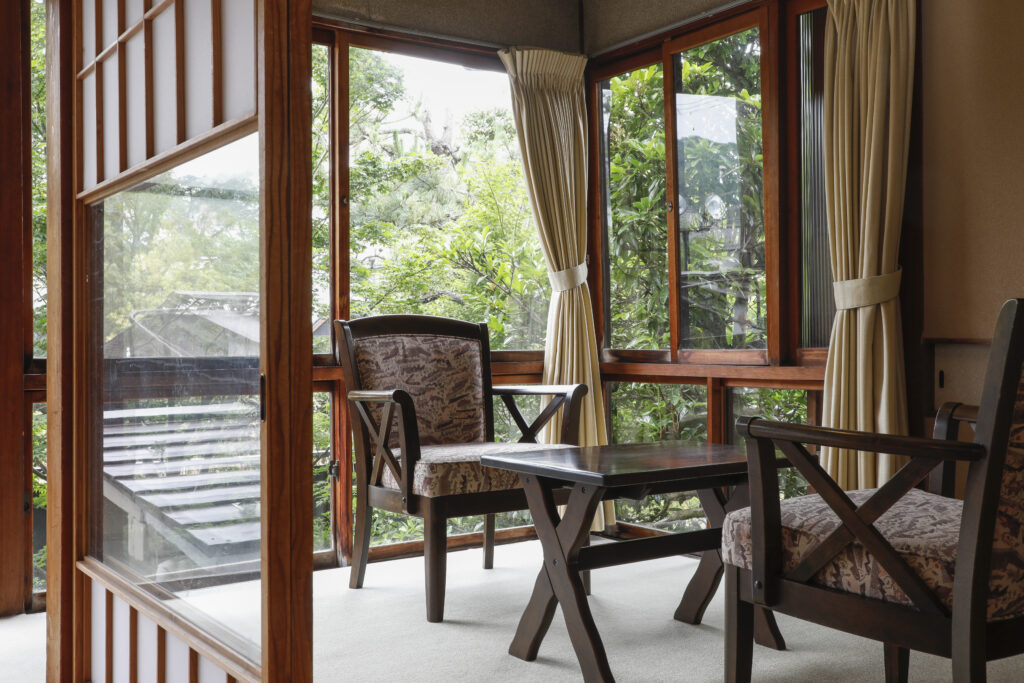
Aside from the sense of nostalgia, there is another reason for Seikiro’s popularity—the artistic legacy of its former guests. Over the centuries, Seikiro has provided lodging to countless famous painters, calligraphy artists, novelists and poets who, wishing to escape the trappings of urbanization, would stay here to take inspiration from the area’s natural surroundings.
Many of these artists donated pieces of their work as a token of gratitude, and rather than hiding them behind closed doors, the owner chose to display them for guests in the communal areas. The collection of this ‘small museum’, as the inn refers to itself as, is predominantly from the 18th to early 20th century (or the Edo to Meiji period (1868-1912)).
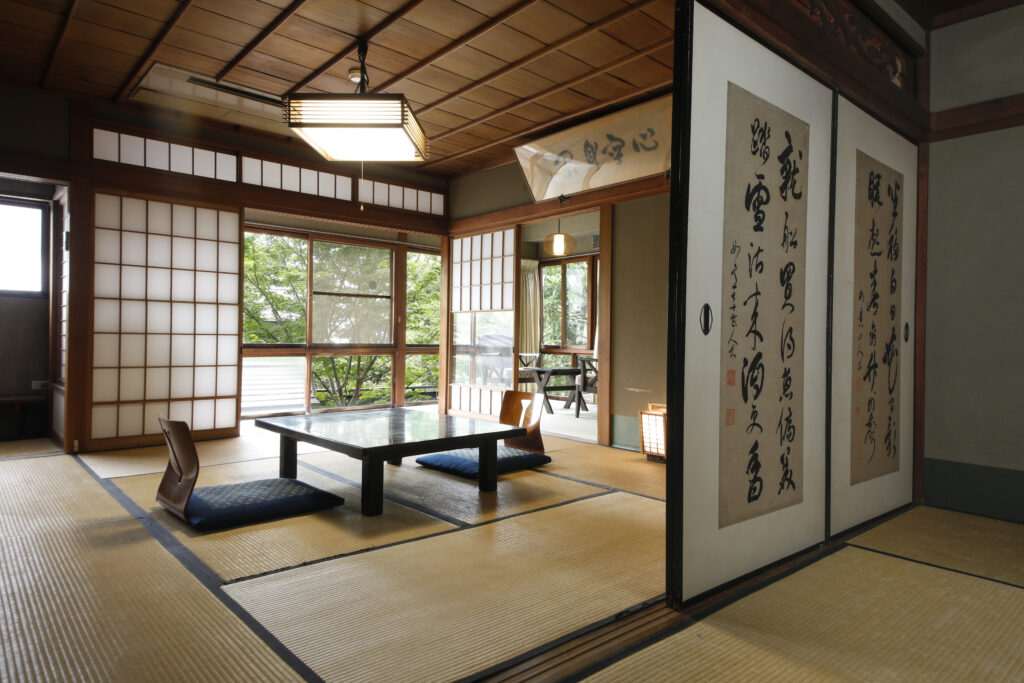
The gallery theme extends to Seikiro’s guest rooms. In the Anju room on the 2nd floor, for example, sliding doors were adorned with stylized calligraphy art on one side and elegant scenes of nature on the other. Another piece of calligraphy hung above a doorway leading to an enclosed veranda that made for a relaxing reading space overlooking the garden. As we absorbed our room’s artistic touches we couldn’t help but imagine the artists who would have also stayed in this very room.
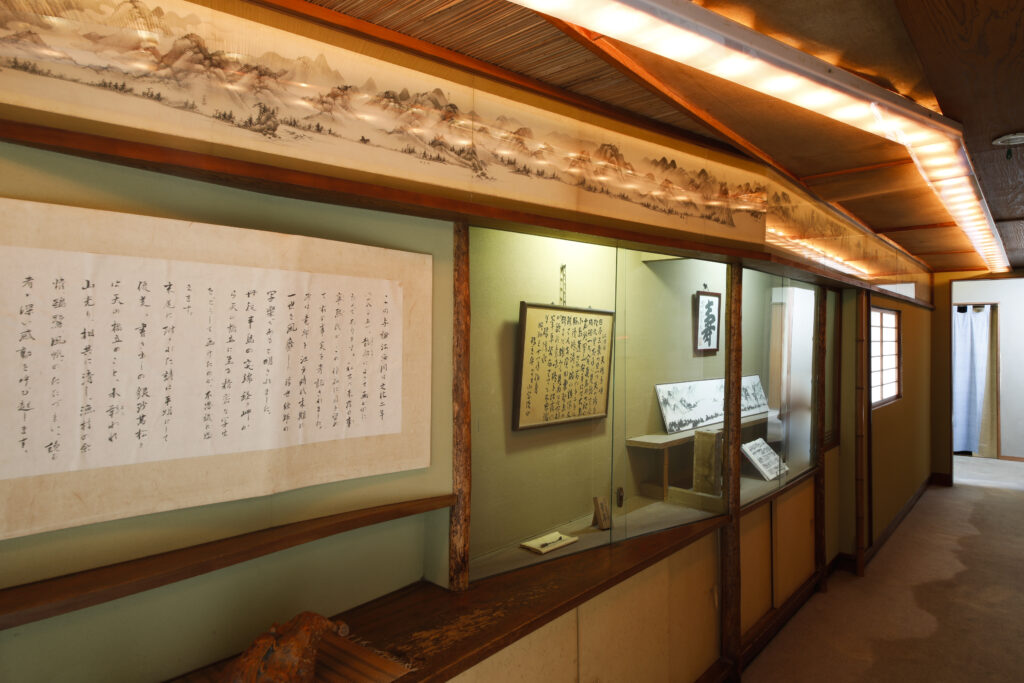
After taking in the ambience of our room, we explored the other floors. Upon request, Seikiro’s owner gave us a short tour during which we learned the fascinating story behind some of the prominent pieces of their collection. One of the most impressive examples was a nine-meter-long stylized ink map that stretches along the top of the display in the second-floor corridor and depicts topographic features of the Tango Peninsula’s rugged coastline.
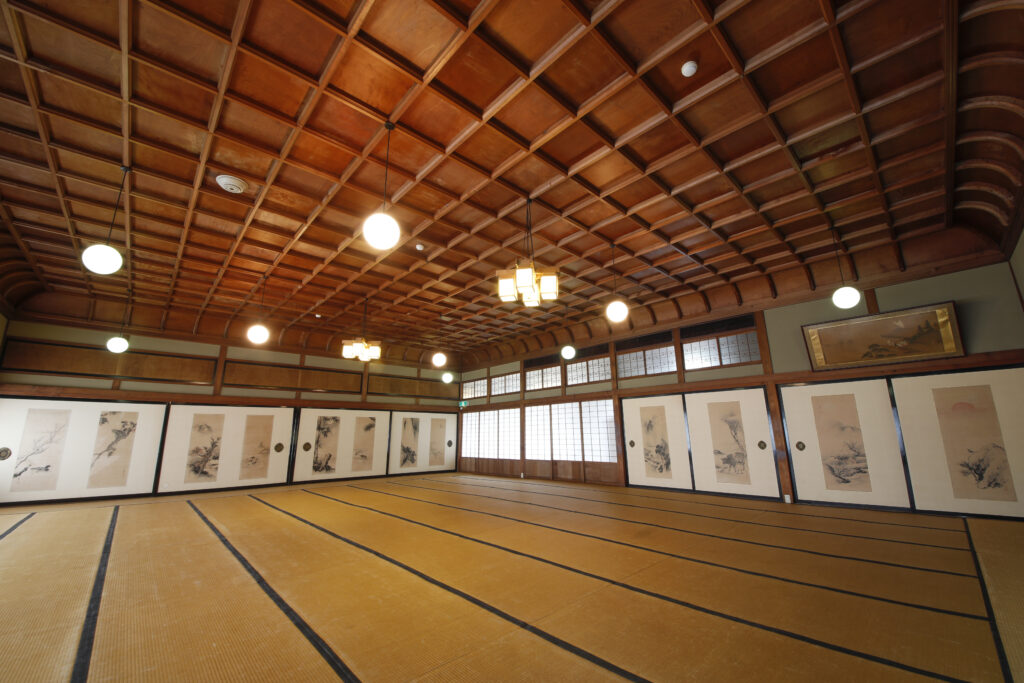
Making our way up to the third floor, we came to an enormous 105-tatami mat hall. Traditionally reserved as a banquet room for privileged guests, the grand room featured a coved and coffered ceiling—an architectural feature only found in the most prestigious properties—and housed a number of splendid pieces of artwork, such as an elegant series of twelve sliding door paintings by Suzuki Hyakunen (1828-1891) which depicted each month of the year through natural motifs. There was also an exquisite 200-year-old lacquered picnic set on display and a 100-year-old Japanese drum, which Mr. Tokuda demonstrated how to strike before treating us to a performance of a traditional Miyazu song from their local festival on a bamboo flute. This impromptu music session in a room of such grandeur was truly a memorable experience.

◆The Freshest Local Seafood
_______________
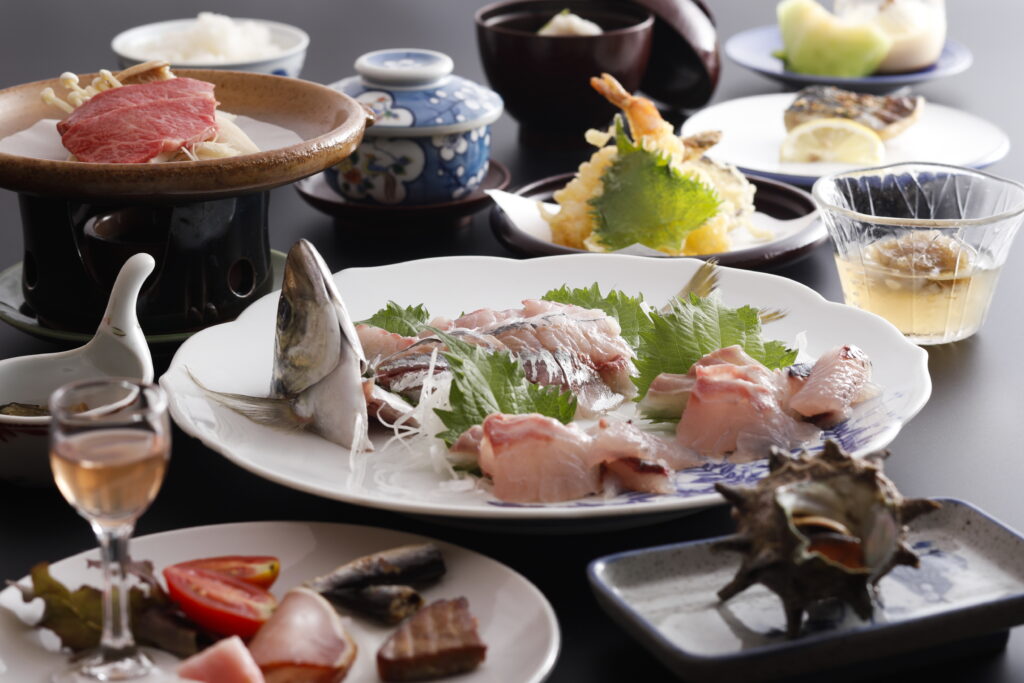
Traditional inns are known to serve excellent cuisine and Seikiro was certainly no exception.
We enjoyed a kaiseki course, a series of small, intricate dishes with ingredients that differ somewhat depending on the season. We were impressed by the array of delectable seafood served which we were told is caught fresh from the local port. Spring brings to the table Spanish mackerel and red sea bream, summer, oysters and Japanese cockles which are a Miyazu specialty, while you can enjoy fresh salmon and mountain vegetables in the autumn. During winter months, two options, a kanburi winter yellowtail and snow crab course, are served. The luscious snow crab of the Tango Peninsula, although a little more expensive, is especially considered a must-try delicacy of the region.
Whether you’re roaming the scenic countryside or venturing up to the coastal regions in the north, Kyoto offers a range of off-the-beaten-track destinations with unique accommodation options that not only capture a more authentic spirit of old Japan, but do so without the crowds. Why not check into one of these remarkable lodgings on your next trip and experience their charm for yourself?
A one-night stay, including two meals, starts from 15,500 yen (including tax and service charges). Prices and cuisine vary with the seasons so please check the homepage for details.
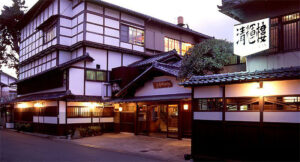
Seikiro Ryokan
The Seikiro Ryokan inn opened in the castle town of Miyazu in the late seventeenth century. The landscape of the nearby Amanohashidate sandbar and the bustling port at Miyazu drew many visitors to the …
